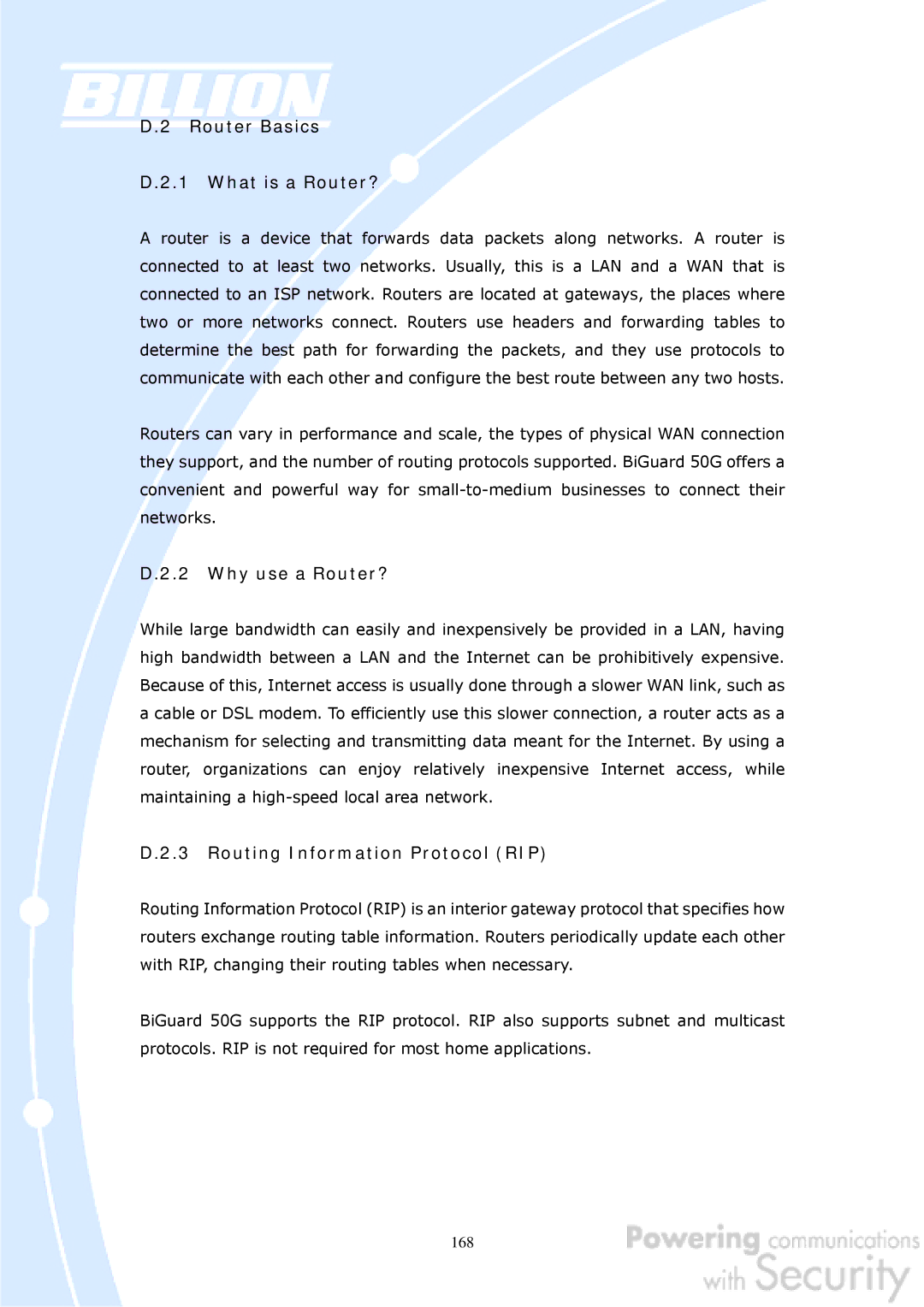
D.2 Router Basics
D.2.1 What is a Router?
A router is a device that forwards data packets along networks. A router is connected to at least two networks. Usually, this is a LAN and a WAN that is connected to an ISP network. Routers are located at gateways, the places where two or more networks connect. Routers use headers and forwarding tables to determine the best path for forwarding the packets, and they use protocols to communicate with each other and configure the best route between any two hosts.
Routers can vary in performance and scale, the types of physical WAN connection they support, and the number of routing protocols supported. BiGuard 50G offers a convenient and powerful way for
D.2.2 Why use a Router?
While large bandwidth can easily and inexpensively be provided in a LAN, having high bandwidth between a LAN and the Internet can be prohibitively expensive. Because of this, Internet access is usually done through a slower WAN link, such as a cable or DSL modem. To efficiently use this slower connection, a router acts as a mechanism for selecting and transmitting data meant for the Internet. By using a router, organizations can enjoy relatively inexpensive Internet access, while maintaining a
D.2.3 Routing Information Protocol (RIP)
Routing Information Protocol (RIP) is an interior gateway protocol that specifies how routers exchange routing table information. Routers periodically update each other with RIP, changing their routing tables when necessary.
BiGuard 50G supports the RIP protocol. RIP also supports subnet and multicast protocols. RIP is not required for most home applications.
168
